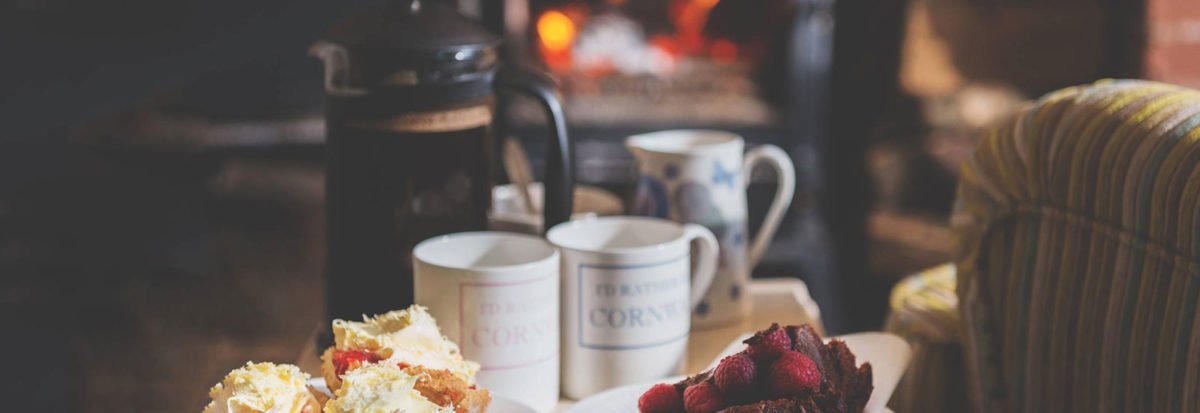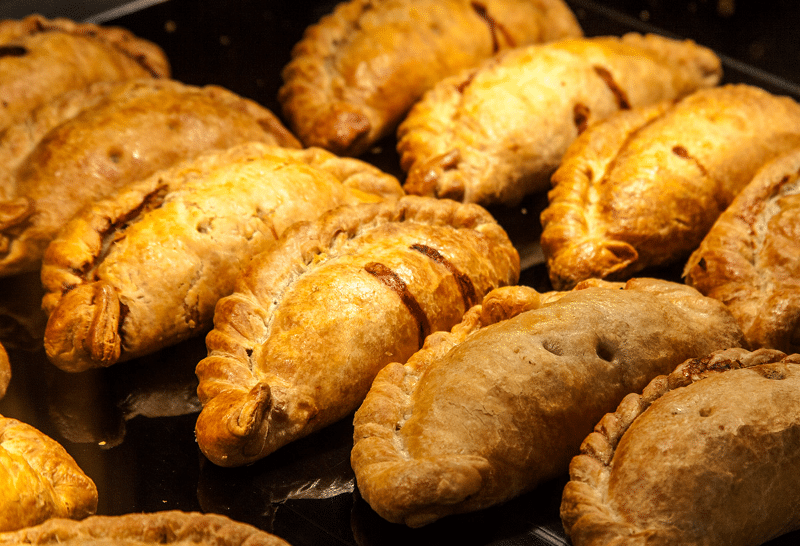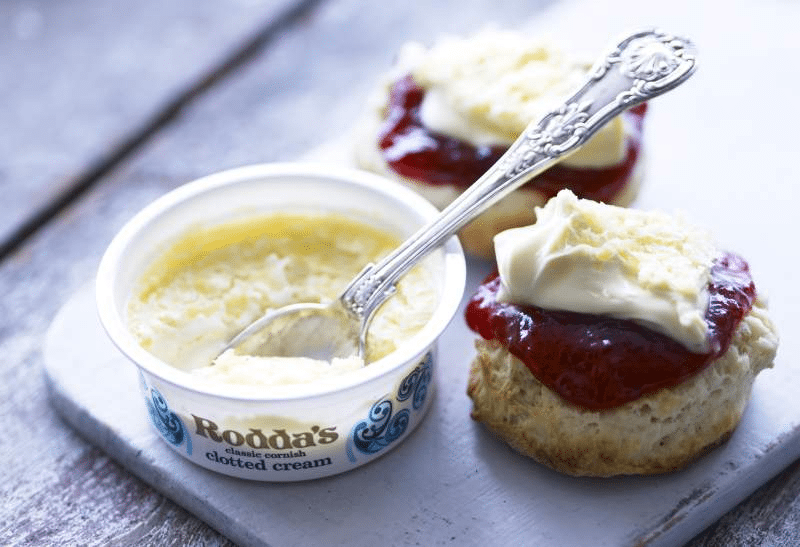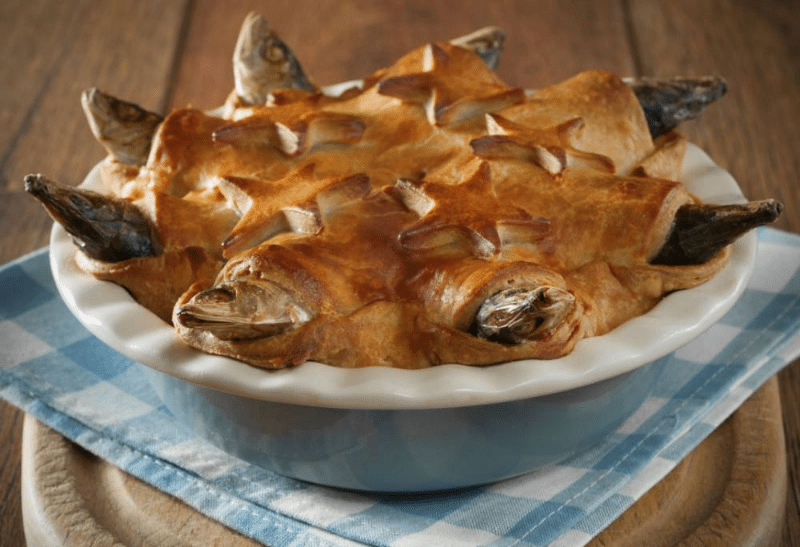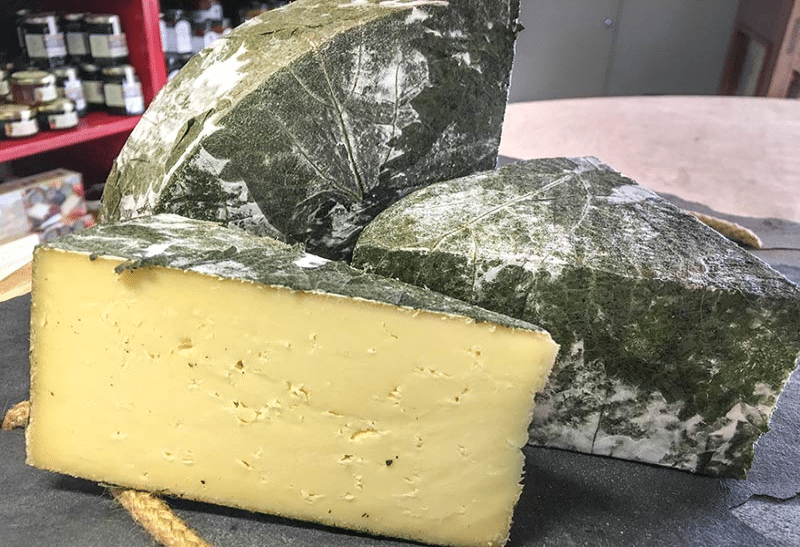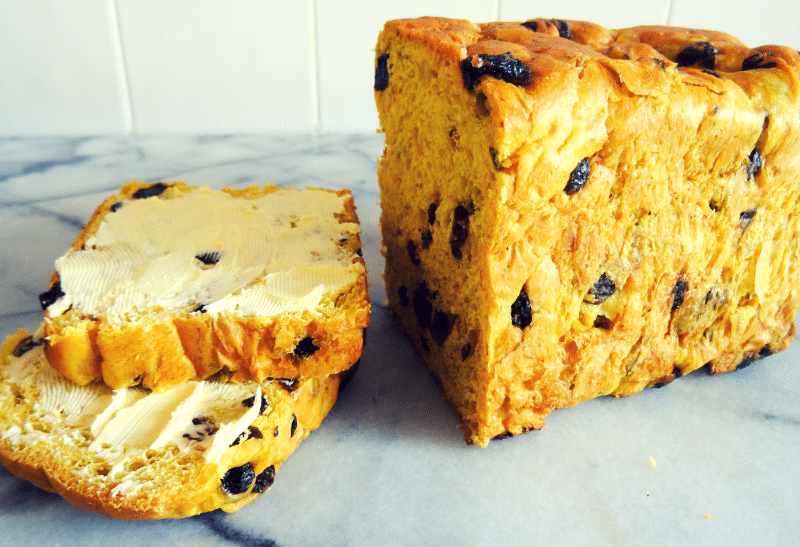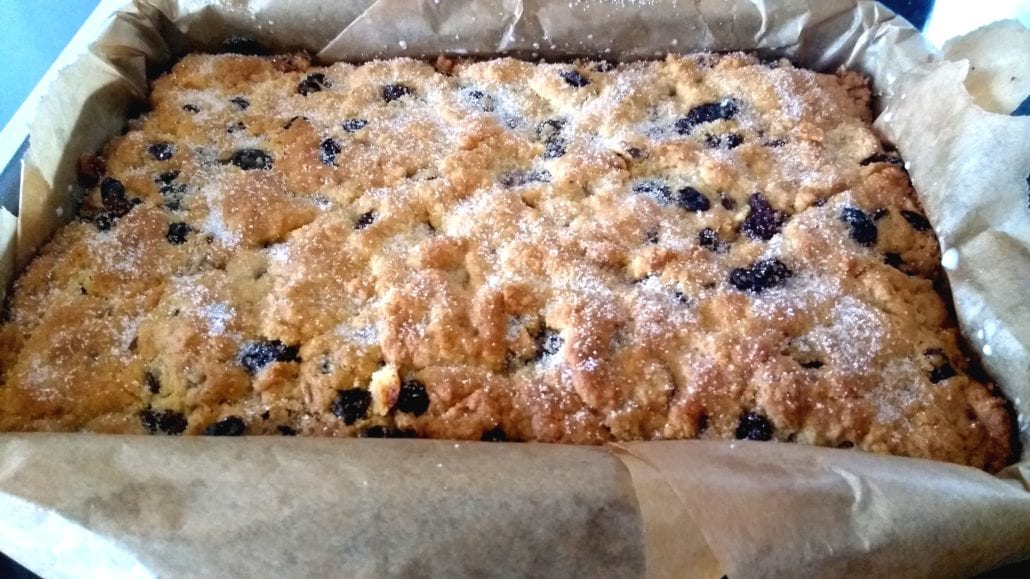Here at Trevigue we relish good, locally-sourced traditional Cornish food. We pride ourselves on harnessing our Cornish heritage and ensure that everything we serve for our breakfasts is picked, caught, grown or sourced here in Cornwall. The recipes which have been passed down from generation to generation in our family are something which we hold dear. Nothing beats Cornish food, and we love telling our guests all about the best places to find authentic traditional Cornish ingredients and those hidden away foodie gems that only the locals know about.
From wine to cheese and everything in between, the unique subtropical climate here in Cornwall means that our local produce is second-to-none and rivals the best anywhere in the world. The food festivals in Cornwall are the best way to try the best Cornish foods so be sure to make time for them when you visit Trevigue this year!
Our Favourite Traditional Cornish Foods
Cornish Pasties
We can’t have a run-down of traditional Cornish food without first starting with the beloved pasty. Known locally as ‘oggies’, the Cornish pasty is an institution and is held in such high regard that after a 9 year battle, in 2011 it earned Protected Geographical Indication status in Europe, meaning that only pasties made right here in Cornwall can boast the name ‘Cornish pasty’. A true Cornish pasty is made from buttery shortcrust pastry which is then folded into a ‘D’ shape and crimped or sealed using a twisted ‘rope effect’ on the side (never on top). The filling of a real Cornish pasty should include at least 12.5% meat (good quality beef) with swede, potato and onion with a light seasoning. The pastry is then glazed with egg and slow-baked to create the iconic golden Cornish delicacy which can be enjoyed at any time of the day. Some people add extras to suit their palate such as a dollop of clotted cream to make it extra juicy. Is your mouth watering yet!?
Clotted Cream
Which brings us neatly to… Cornish clotted cream! Along with the pasty, clotted cream is also one of the traditional Cornish food which have gained Protected Geographical Indication meaning that only the milk from Cornish cows can produce Cornish clotted cream. Much like our pedigree free-range grass-fed cows here at Trevigue, true Cornish clotted cream is made with milk high in beta-carotene (grass) to give it that beautiful golden top. Clotted cream boasting a thick golden crust and unctuous silky cream below is nothing short of heavenly, especially when dolloped high on scones in a Cornish cream tea (jam before cream, of course). But this creamy delicacy doesn’t only have the use of adorning dishes on the side… it can also prove a crucial ingredient in delicious favourite Cornish recipes such as clotted cream shortbread biscuits, clotted cream fudge, Cornish ice cream and Victoria sponges to name but a few!
Stargazy Pie
Originating ‘down West’ in the pretty fishing village of Mousehole, Stargazy Pie is a traditional Cornish food which hails from Cornwall’s rich fishing heritage and tradition. Legend has it that one December in the 16th century, the village of Mousehole was facing starvation as the boats couldn’t make it out to sea due to raging storms. A brave local fisherman by the name of Tom Bawcock braved the storms on Christmas Eve to save the villagers and returned with enough fish to feed everyone in the village. He was hailed a hero, and the fish were baked into a pie with their heads poking out the top to prove that there were fish inside.
Ever since, the villagers of Mousehole have recreated the pie which is made of baked pilchards or sardines, eggs and potatoes, topped with a pastry crust with the fish heads poking out the top which looks as though they are gazing skyward. Apparently the fish pointing upwards makes the oil run out of the fish into the pie which gives a richer more delicious flavour. Mousehole also celebrates this tradition with a dazzling array of Christmas lights for which people come from miles around to see, with a giant set of lights taking the form of the stargazy pie itself with fish heads poking up to look at the six twinkling stars above.
The Cornish Fishmonger have a fantastic Recipe for Stargazy pie!
Cornish Yarg
The first Cornish Yarg was made by Alan and Jenny Gray in Withiel on the edge of Bodmin moor (‘yarg’ is their surname backwards!). They had found in their attic an old recipe dating from 1615 for cheese wrapped in nettles and decided to recreate it. It is thought that the original recipe is thought to date back to the 13th century but since 1984 Cornis Yarg has been a delicacy enjoyed alongside homemade chutney or simply on its own all over Cornwall and beyond. This delicious semi-hard creamy cheese has a certain uniqueness of flavour due to being wrapped in stinging nettles (and sometimes wild garlic leaves) which are painted on by hand. The nettles changes the acidity of the cheese which affects the way the curd breaks down and produces a semi-hard exterior with a sometimes crumbly centre. This traditional Cornish food is absolutely delicious and it’s easy to see why it has won multiple gold awards at the World Cheese Awards.
Saffron Buns/Saffron Cake
Recipes for Cornish saffron cake vary in combinations of spices and dried fruits from village to village, but the classic saffron cake recipe is beloved over the whole of Cornwall and provides a popular teatime treat (especially when slathered with creamy butter). The saffron bun is a cornerstone of Cornish cuisine and similar to the ‘teacake’ found in other parts of the UK, but it is given a unique yellow hue thanks to the addition of the world’s most expensive spice – saffron. It is thought that the Phoenicians brought saffron to Cornwall and used it to trade for tin which explains how this exotic spice made it to Cornish shores. The basic recipe contains flour, sugar, currants and sultanas, spices such as nutmeg, fat (traditionally lard), yeast and saffron. The saffron is often infused in milk to bring out the colour and flavour of the spice and added to the dough before cooking. We love saffron cake and prefer ours dolloped with clotted cream alongside a pot of Cornish tea. Yum.
Cornish Beef
When you are looking for the best Cornish beef for making a perfect pasty (or other Cornish food recipe), you can look no further than homegrown, grass fed healthy cows. Here at Trevigue we are passionate about our herd of Ruby Reds. We have produce slow-growing, slowly-reared cattle by embracing an ‘old-fashioned’, traditional way of farming celebrates biodiversity. Unlike other Cornish beef farms where farmers feed their cows cereals 8 weeks before slaughter to “fill them out”, we never give our cattle anything extra; they only munch the grass which grows naturally here at Trevigue. Our cows stay outside for 12 months of the year, grazing the rough moorland grass, heather-strewn pastures and golden gorse up here on our beautiful Cornish clifftop. From the time they naturally wean off their mothers milk at (at least) 9 months old, our cows are solely fed on a diet of pure pasture; herb-rich grass, hay or silage. This natural way of environmental farming retains the omega 3 in the beef which can only be found in beef that has purely been fed on grass (cereals cancel out the omega 3 and so it is counter-productive to producing the finest, healthiest Cornish beef). Healthy grass-fed cows who are farmed in this traditional way have little need for medicines as they are so naturally healthy and not interfered with by humans. Our organic slow-growing Red Rubies are helping to sustain beautiful, natural, grassland landscapes – we protect the heather and flowers which occur naturally on the farm because our cows need it to thrive. Our Cornish beef is quite simply the best there is!
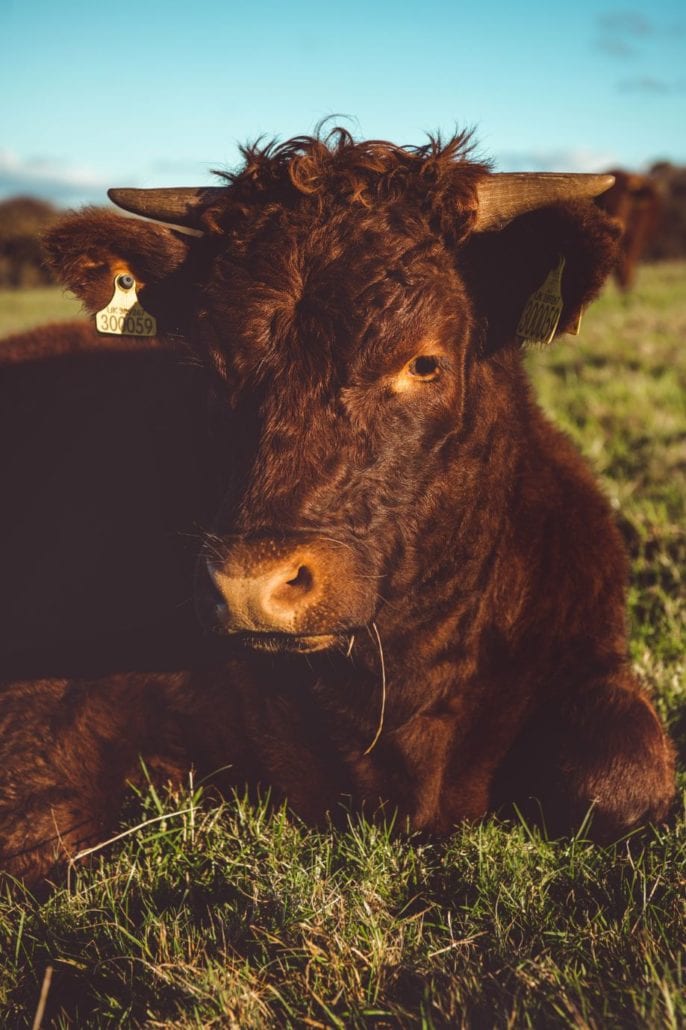 Traditional Cornish Food Recipes
Traditional Cornish Food Recipes
Recipe for Hevva Cake
Often also known as ‘heavy cake’ (although it is anything but), this traditional Cornish sweet treat is similar to Welsh cake and was usually made by the wives of fishermen to welcome their men home after a fishing trip. The traditional criss cross pattern on the top symbolises fishing nets. The word ‘hevva’ is what the lookout man (the ‘huer’) would shout when he saw shoals of pilchards and, on hearing ‘hevva hevva’ (“here they are!”) the fishing boats would set off and return (hopefully) laden with pilchards. This cake would be baked and eaten in celebration of a bountiful haul. Cornish Hevva Cake is basically a generous dollop of spiced dough mixed with dried fruit (currants) to create a warming, crumbly cake that’s perfect with a cup of tea. It’s not heavy or light, it’s just a simple and frugal bake with no eggs, just flour, fat (usually lard), sugar and currants. And absolutely delicious.
Recipe (courtesy of BBC Good Food):
Makes 15 Slices
- 500g Self-raising flour
- 250g Butter
- 360g Mixed dried fruit
- 180g Sugar
- 100ml Milk
Recipe for a Chipple Pasty
Here is an old Cornish recipe passed down from Gayle’s gran – her mum grew all the vegetables in the garden to feed the family of five and loved making this recipe which was passed down through the generations:
A chipple pasty has pastry top and bottom (the original pastry would have been one third lard, to two thirds self-raising flour). Before the shallots grew too large (very important to use all the green part of the shallot) the whole vegetable is cut into slices. The pastry is in a sponge tin and filled with ‘chipples’ lots of salt and white pepper (very important as we never had black pepper back then!), 3 whisked eggs from the farmyard chickens. Sauté streaky outdoor-reared free range bacon, add to the whisked eggs and chipples. Fold, bake, et voila!
Where to Find Traditional Cornish Ingredients
From bakers, butchers, breweries, cider makers, chocolatiers and cheese-makers, Cornwall’s thriving food scene has positioned our county as a leader in the UK’s gastro trail. If you are a foodie in Cornwall (which if you’ve read this far, we’ll hazard a guess that you are) then you’ll be wondering where to find the best ingredients for traditional Cornish food. If you know what you’re looking for then the hedgerows, harbours and woodland all around Cornwall are bountiful for foragers. The fresh sea air, nourishing rain and summer days filled with golden sunshine all combine to create the perfect environment for growing the tastiest Cornish food and we consider ourselves extremely lucky to live in an area which is so rich in beauty and bountiful in produce.
The various foodie festivals around Cornwall are a very good place to start. However with lockdown restrictions making large gatherings a big no, perhaps it would be a better idea to get yourself booked into one of Cornwall’s famous Michelin starred or fine dining restaurants so that you can enjoy the finest Cornish food cooked by some of the UK’s finest chefs.
We don’t know about you, but we’re now hungry! We hope that we’ve managed to tickle your tastebuds with this run down of traditional Cornish foods. Have we missed your favourites? Let us know over on Facebook and share your favourite Cornish recipe with us -perhaps we’ll try and recreate it whilst you’re staying here on our blissful Cornish clifftop! We look forward to welcoming friends old and new over the coming months, get in touch to book your stay.

